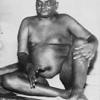Just a thought or two for Haikus:
1. Haikus are traditionally driven by IMAGERY
2. Witnessing, not philosophy or self-reference
Many early modernist and mid-century poets picked up on Asian poetry as one of their inspirations for how to create poetic verse. The notion of the "Image" became very important for many poets. William Carlos Williams set the tone for many who followed him when he proclaimed ""No ideas but in things." Perhaps his most famous poem was one of his simplest:
I have eaten
the plums
that were in
the icebox
and which
you were probably
saving
for breakfast
Forgive me
they were delicious
so sweet
and so cold
While the poem is not without the subjective point of view of the poet as narrator of an experience, it is instructive to see how he pulls your attention to the images of the plums in the icebox and closes by saying they were so sweet and so cold. I think the corollary I'd take from that is that when you are Haiku'ing it may be helpful to find some "thing" that is outside of your own self-referential notion of your self and is clearly either an object or a sensation not directly tied to you as a person or personality. Charles Olson spoke of Objective Verse for similar reasons.
So you see the poets may be speaking of their own perceptions and be referring to their own particular histories, but they are always drawing your attention back to something not localized in themselves, but of the world itself and some"thing" other than the writer.
While this may be a forum for practitioners, you may generate greater intrinsic awareness by playing more with the juxtaposition of images than with injecting your commentary on "essence" into it. After all, isn't haiku about experiencing some essential moment through words without having its meaning explained to you?
Perhaps you can get more out of haiku by reaching for words that become "things" as opposed to making philosophical statements or imposing meanings. The images can mean many things and there is always the ability to split hairs and have BOTH imagery and literary allusion at work simultaneously. Implied meanings are more subtle and challenging to the mind of the reader.
I love the last line haiku concept. Its a brilliant game, very conducive to combining imagery. Many haikus have one image(s) in a line or two that is offset by another image in the other line(s). The images don't have to be fully or even partially related. The art is in the poem, not the logic.
Another way of saying these things is concepts are usually lacking in poetic power. When you state a conceptual notion you are actually very much injecting yourself into the poem more than you may believe. It pulls the reader into your state of mind perhaps which could actually qualify as a "thing" of poetic value when handled well, but most of the time declaring ideas is not the point of haiku in general. An idea can be a thing so I don't want to impose anything or ruin the fun, but I'd like to see if people can push themselves further from their comfort zones and use their imagination as an observational toolkit, i.e. pull images from your mind if not from nature itself.
Still, this is 2009 and all references are worth mining. Pop culture is part of our experience. The trick is to work in any and all things as "things" more than injecting yourself into the poem.
Just some thoughts on haiku and poetry in general.
MudLotus

